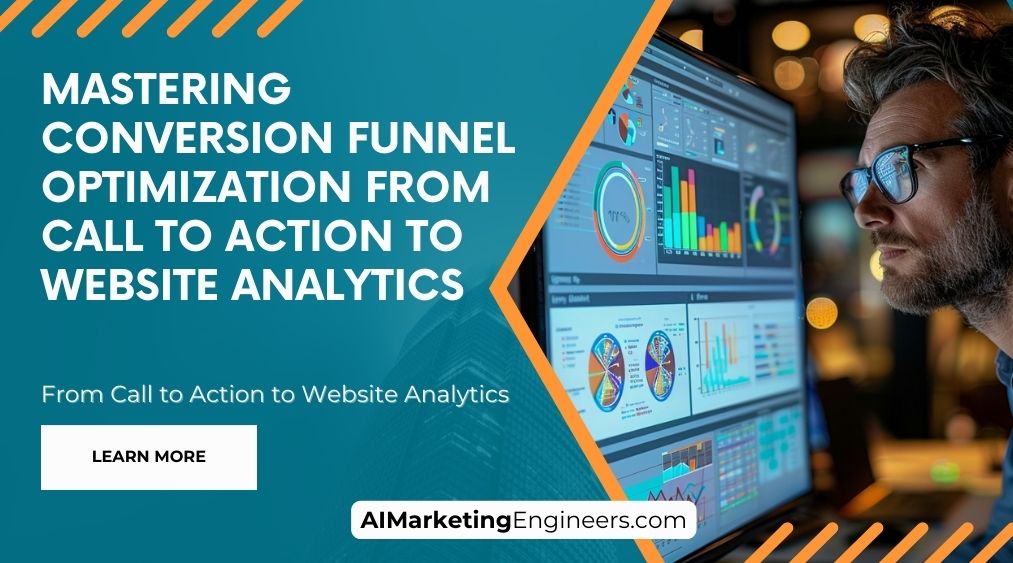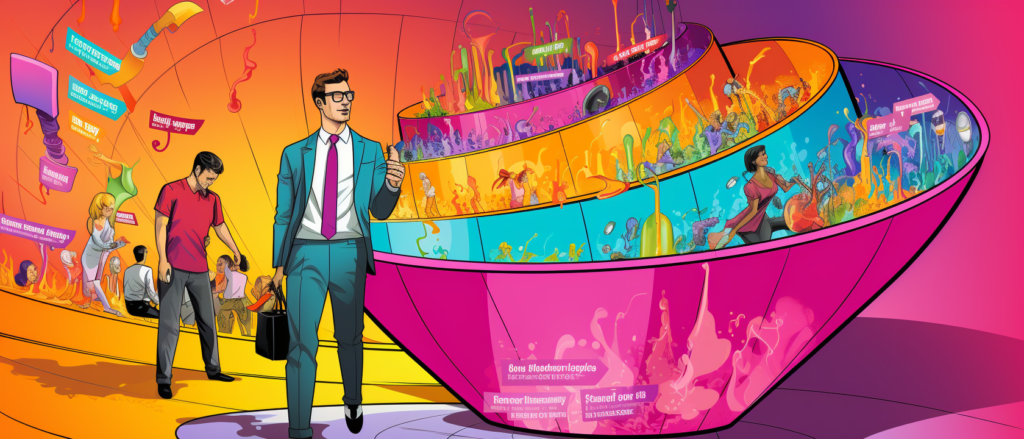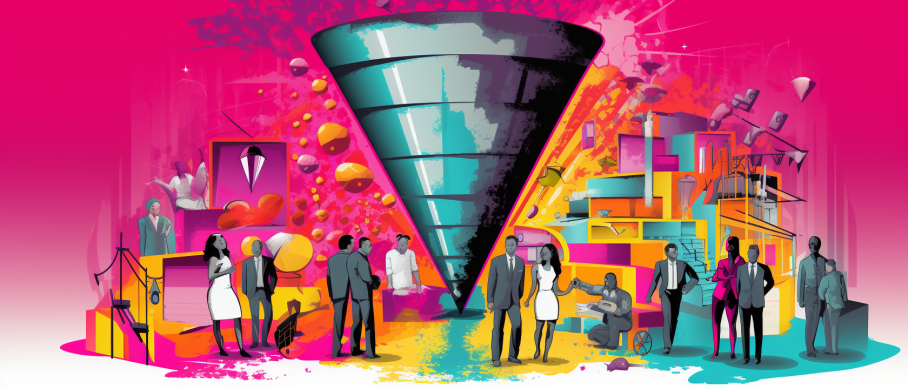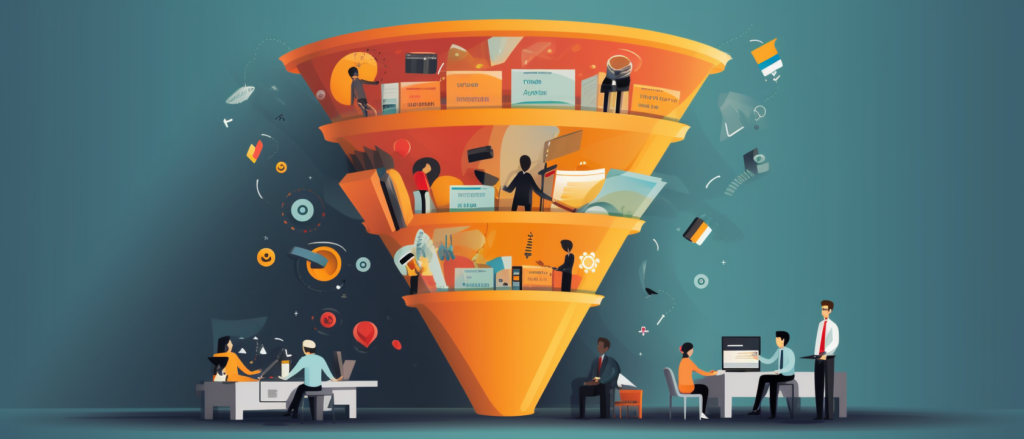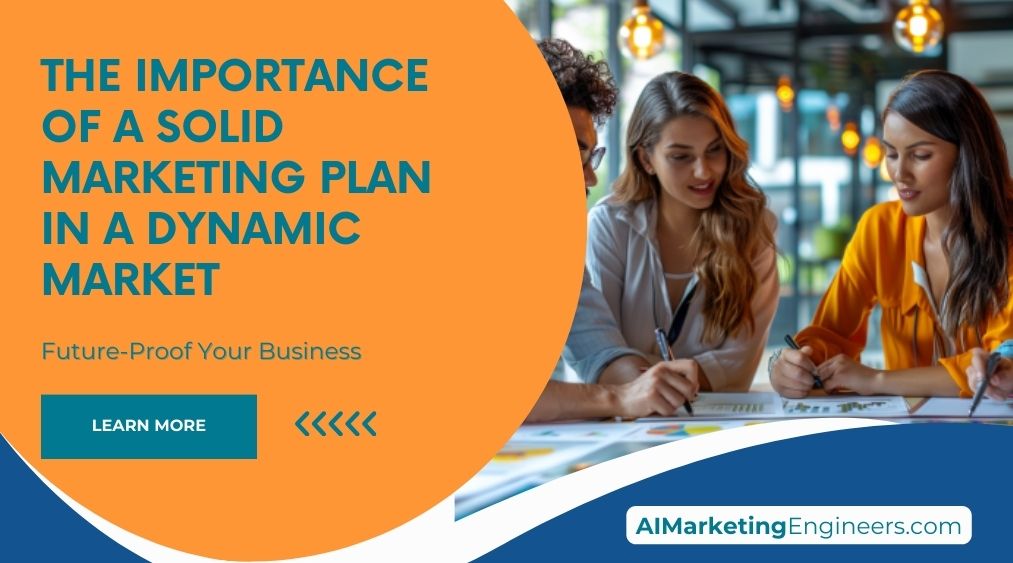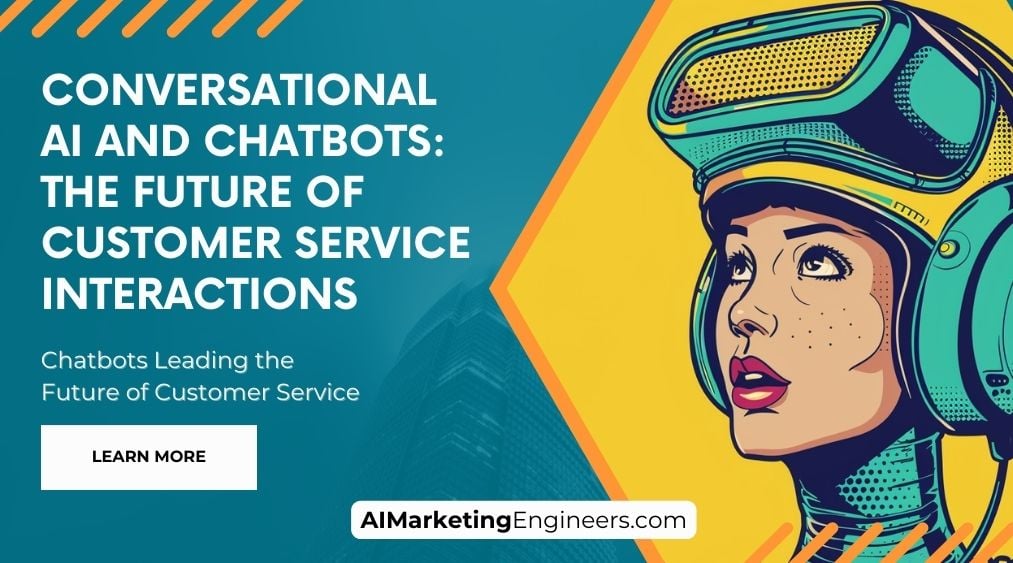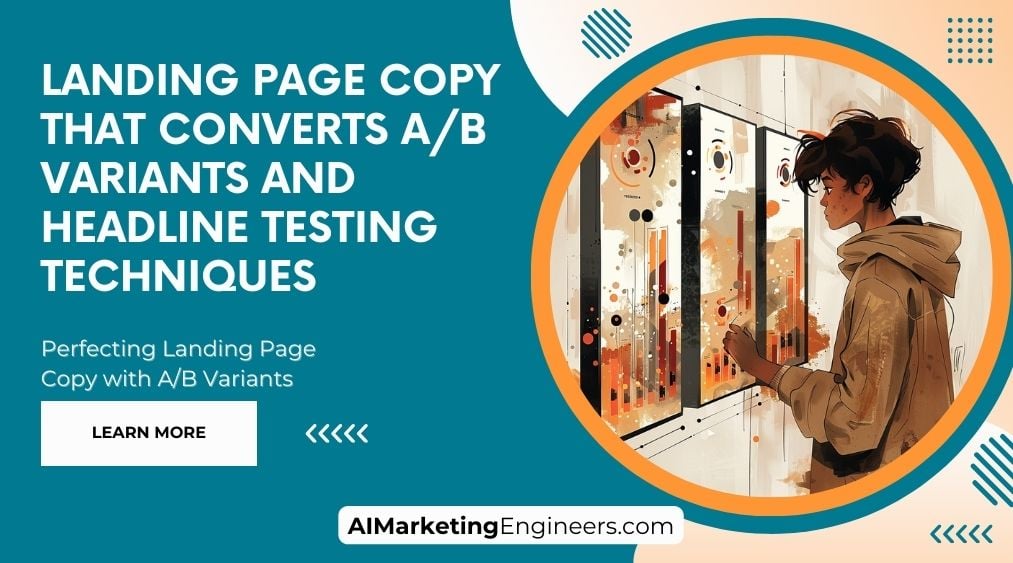Key Takeaways
✅ Understanding Your Audience Is Crucial: Knowing who you're talking to is the first step to success. When you create detailed buyer personas, you get the blueprint for your marketing strategies. But don't get too comfy; keep an eye on the market and refresh those personas as needed to ensure you're always on target. Did you know your conversion rates could climb by 10% just by updating and acting upon your buyer personas?
✅ Content Tailoring and Streamlining: It's like dressing for the occasion. Sure, you could wear a ball gown to the gym, but why would you? Match your content to each step of the funnel – from awareness all the way to conversion – and make that journey as smooth as silk. Streamline where it counts and you could see a reduction in those pesky cart abandonment rates by up to 35%.
✅ Data-Driven Decision Making and Continuous Optimization: If you're not measuring, you're not marketing. Use the numbers - like conversion rates or visitor-to-lead ratios, tweak, improve, repeat. Companies that embrace data-driven marketing are more than six times more likely to be profitable year-over-year. Now that's a stat to take to the bank!
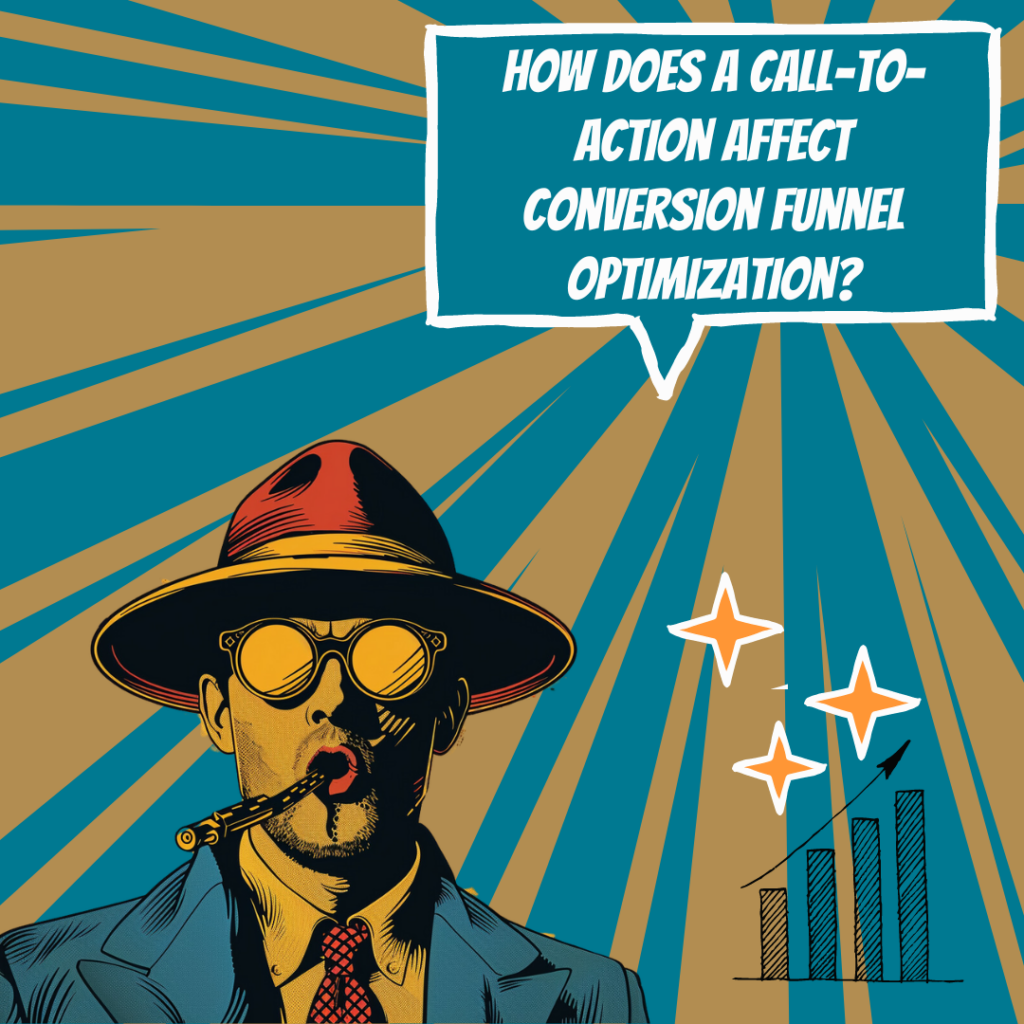
Introduction
Are you in a relentless pursuit of that elusive spike in sales? The secret sauce to nailing your marketing goals is a lot more science than you might think. It’s found within the complexities of Conversion Funnel Optimization. Imagine aligning your customers' desires with your marketing efforts—seamlessly. It transforms that first curious click into a cascade of purposeful actions, climaxing at the point of purchase and blooming into a loyal customer relationship.
In this article, we’ll peel back the curtain on modern tactics that make your conversion funnel not just work, but work wonders. We're talking groundbreaking insights that turbocharge your calls to action, web pages that practically whisper "buy now" into your visitors' ears, and numbers pouncing from the analytics dashboard straight into your strategy meetings. Stay with us as we reveal actionable tips to magnify your ROI and bulldoze those conversion roadblocks. Ready for a deep dive into optimizing every twist and turn of your marketing journey? Let's go get those numbers up.
Top Statistics
| Statistic | Insight |
|---|---|
| Conversion funnels and revenue: Optimizing conversion funnels can increase revenue by up to 20%. | With such a significant impact on bottom-line growth, businesses can't afford to overlook the optimization of their sales pathways. |
| Personalization and consumer engagement: 72% of consumers say they only engage with personalized marketing messages. | This statistic underscores the necessity for businesses to craft more tailored content, which can effectively resonate with and convert potential customers. |
| Digital experience analytics market: The market is projected to reach $4.3 billion by 2025, growing at a CAGR of 20.3% from 2020 to 2025. | As this field burgeons, leveraging analytics tools for better understanding customer behavior becomes not just a trend, but a necessity for staying competitive. |
| Heat mapping tools: Heat mapping tools can increase conversion rates by up to 25% by identifying high engagement areas on websites. | Employing heat maps can offer deep insights into user experience (UX), highlighting opportunity areas to enhance for better conversion. |
| Streamlined conversion process: Simplifying the conversion process can increase conversion rates by up to 20%. | Reducing friction points in the buying journey is not just about enhancing customer experience but also about directly boosting the likelihood of completing a sale. |
Understanding the Conversion Funnel
If you're aiming to make your online business thrive, knowing about the conversion funnel is like finding a treasure map. In simple terms, it's the journey a person takes from first hearing about your brand to finally buying your product or service. And just like any trip, the smoother the road, the better the experience. When a conversion funnel is finely tuned, it not only brings in more customers, but it also makes sure they're happier along the way. Imagine if people actually enjoyed the process of buying from you so much that they came back for more. That's the power of a well-optimized funnel.
Identifying and Segmenting Your Target Audience
Who are you selling to? It sounds like a simple question, but the answer can be quite complex. To make a conversion funnel work at its best, you need to really get into the heads of your target audience. Picture who they are, what they want, and how they behave. You take that sketch and turn it into a finely detailed buyer persona using real research and data. But people change, and so should your personas. Keep them up-to-date to make sure your message still resonates. It's like keeping a photo of a friend; you don't want to be thinking they still have a mullet from the '80s if they've long moved on to a sleek bob.
Crafting Content for Every Stage of the Funnel
Once you've got your audience down pat, you need to talk to them in a way that makes sense for where they are in their journey. Just like you wouldn't ask someone to marry you on the first date, you wouldn't hammer a first-time visitor with a hard sell. At the beginning, you focus on educational content that taps into their problems. As they get to know you, show off what makes your product special. When they're ready to buy, a clear and irresistible call to action should be there to seal the deal. Afterwards, let them know they've made the right choice with content that reinforces the warm and fuzzy feeling of their purchase.
Optimizing Your Website for Conversion
Now, about your website – think of it like a store. You wouldn't want customers tripping over clutter on their way to the checkout. That's where landing page optimization comes in – a welcoming front, with a straightforward path to buying. Then, you've got personalized emails, like a helpful assistant showing your customers where to find what they need. And if they leave without buying, a retargeting ad can gently remind them what they're missing out on. Remember, A/B testing is your friend here; it helps you figure out what works and what doesn't, so you can keep getting better.
Analyzing and Measuring Results with Website Analytics
Have you ever wanted a crystal ball to see how your business is doing? Website analytics is as close as you'll get. This is like having a dashboard that tells you everything – how many people are buying, if they're leaving your site without purchasing, or how much they're spending over time. These metrics are crucial; they show you where your funnel is smooth sailing and where it's a bit rocky. When you base your decisions on data, you have a better chance of upping those numbers and making more money in the long run.
Putting it All Together: Mastering Conversion Funnel Optimization
Combining all these elements – understanding the funnel, knowing your audience, creating spot-on content, refining your website, and relying on analytics – that's how you become a maestro at conversion funnel optimization. By consistently tracking and testing every single step, you're always on the lookout for how to do better. It's like tuning an engine to get the best performance; small tweaks can lead to big gains. And that's how you not only meet but exceed your business goals, with an efficient funnel that turns visitors into loyal customers.
AI Marketing Engineers Recommendation
Recommendation 1: Integrate Behavioral Triggers in Your Call to Action (CTA): When creating a Call to Action, don't just think of a catchy phrase; consider the specific behavior you want to elicit from your customers. For instance, Time Magazine reported a 12% improvement in their conversion rates after A/B testing their CTAs. By using analytics to monitor how users interact with various CTAs, you can tailor your messaging to align with the users' behavior, leading to better conversion rates. Employ data to understand the action paths of converting customers and mimic these triggers throughout your CTAs to add a personal touch that speaks directly to your visitors' intentions and interests.
Recommendation 2: Optimize for Mobile Experiences: It's no surprise that mobile traffic has been on the rise, with Statista reporting that it accounts for approximately half of the web traffic worldwide. This trend underscores the importance of optimizing every element of the conversion funnel for mobile users. From the loading speed of your page to the simplicity of the checkout process, ensure that mobile users have a seamless experience. Run tests to ensure forms are easily fillable and actions are straightforward, considering the smaller screen real estate and touch-based interaction of mobile devices.
Recommendation 3: Leverage Predictive Analytics: Within the wealth of data available through website analytics lies the power to predict future customer behaviors. Tools like Google Analytics can shed light on potential drop-off points in the conversion funnel, allowing for proactive optimizations. For example, if you notice a high abandonment rate at the shipping information page, you might need to reassess the user experience or provide more shipping options. By utilizing predictive analytics, you can identify areas for improvement before they become conversion roadblocks, thereby offering a smoother journey from initial interest to the final transaction.
Relevant Links
- Deciphering WeChat: The Key to Thriving in China's Digital Sphere!
- Short-Video Dominance: How to Make Your Brand Shine in China!
- SEO Strategies to Conquer South Korea's E-Commerce Market!
- Insights into Chinese Consumer Behavior: Lead the Market in 2024!
- Dominate German Search Engines: Proven SEO Tactics for Google.de!
Conclusion
Mastering Conversion Funnel Optimization is more than a clever marketing trick; it’s a comprehensive approach to understanding and guiding potential customers from awareness to action, and beyond. Imagine a world where every visitor to your site feels understood and gently guided towards the solution they're looking for—that's the power of a well-crafted conversion funnel. By coupling a deep understanding of your target audience with tailored content for each stage of their journey, you establish the groundwork for effective communication and heightened customer experience.
Landing pages are not just digital brochures; they're your digital handshake, welcoming visitors and guiding them with a clear call to action. But the journey doesn't end there. Integrating web analytics into your strategy lets you peek behind the curtain, revealing not just volumes of traffic but stories of engagement, areas for improvement, and opportunities for growth. With a finger on the pulse of your funnel’s health through metrics such as conversion rates and customer lifetime value, decision-making becomes less of a guessing game and more of a science.
Don't miss the beat—stay in tune with evolving consumer behaviors by continuously refining your marketing strategy. It’s a never-ending cycle, but one that nurtures sustainable business growth. Are you ready to dive in and shape your customer's journey? Remember, the route from curiosity to conversion is paved with relentless optimization and an unwavering focus on analytics. Turn insights into action and watch as your business not only meets but exceeds its goals.
FAQs
Question 1: What is a conversion in marketing?
Answer: A conversion is when someone takes an action you want them to, like joining your newsletter, downloading your ebook, signing up for a webinar, or buying something.
Question 2: What is a conversion funnel?
Answer: A conversion funnel is like a roadmap of someone's journey from first hearing about your business to buying something. It normally has stages like awareness, interest, desire, and action - you might've heard of AIDA.
Question 3: What is conversion rate optimization (CRO)?
Answer: CRO is all about making your website or landing page better so more visitors do what you want them to do. It usually means testing and tweaking things to get better results.
Question 4: What metrics should I track for funnel analysis?
Answer: You'll want to keep an eye on things like how many visitors become leads, how many leads become customers, your conversion rate, bounce rate, and how long people stay on your pages.
Question 5: How do I analyze my conversion funnel effectively?
Answer: Map out every step people take in your funnel, look for any hiccups, and figure out how to make things better. Tools that show you what people do on your website, like heat maps and A/B testing, can give you the lowdown on what's working and what's not.
Question 6: What are some advanced optimization techniques?
Answer: Things like using fancy software to help your marketing run on autopilot, making your content super relevant to each visitor, and using tools for testing and improving your site's performance.
Question 7: How do I automate lead nurturing?
Answer: Use software to automatically send the right content to the right people at the right time, treating them to a personal touch with less work from you. This includes timed email sequences and content that changes based on who's looking.
Question 8: How do I determine what elements to test for optimization?
Answer: Look at what the data and people's feedback are telling you. Focus on areas that need work and prioritize changes that could make the biggest difference.
Question 9: What tools are useful for conversion optimization?
Answer: There are many, but some favorites include Crazy Egg, Google Analytics, Google Optimize, Hotjar, Optimizely, and VWO. They help with figuring out where people click, understanding your traffic, testing different ideas, and tweaking your site.
Question 10: How do I track the effectiveness of optimization changes?
Answer: Run A/B tests with tools like Optimizely or Google Optimize, then watch to see which version people like better. Spread the winning changes across your website.
Academic References
- Aslan, B., & Stevenson, M. (2017). Query Analysis for Conversion Funnel Optimization in E-commerce. Journal of Electronic Commerce Research, 18(1), 1-15. This article delves into conversion funnel optimization, emphasizing the importance of query analysis in understanding customer intent and behavior in e-commerce transactions.
- Stone, G., & Woodcock, N. (2014). Interactive, direct and digital marketing: A future that depends on better use of business intelligence. Journal of Research in Interactive Marketing, 8(1), 4-17. Stone and Woodcock discuss the blend of interactive, direct, and digital marketing strategies, stressing the role of business intelligence in collecting and analyzing quantitative data that informs conversion rate optimization (CRO).
- Chaffey, D., & Ellis-Chadwick, F. (2019). Digital Marketing. In Digital Business and E-Commerce Management (7th ed., pp. 223-275). Pearson. Chaffey and Ellis-Chadwick provide comprehensive coverage on optimizing the conversion funnel in a digital landscape, focusing on personalization strategies and customer engagement.
- Patel, S., & McCarthy, L. (2020). Data Collection and Analysis Strategies for Service Innovation. Journal of Service Research, 23(5), 560-578. In this study, Patel and McCarthy examine effective methods of data collection and segmentation to spur innovation in services, which can be applied to the optimization of a conversion funnel.
- Lin, H., & Chen, M. (2017). A study on the Influence of Web Usability on User Satisfaction. Information & Management, 54(3), 344-358. Lin and Chen explore how user-friendly website design impacts customer satisfaction which, in turn, is a crucial factor in securing a competitive advantage via conversion rate enhancements.
